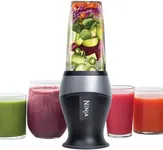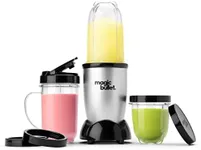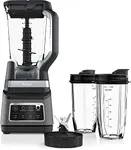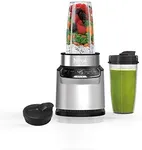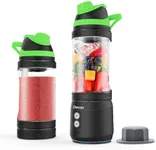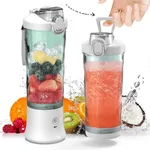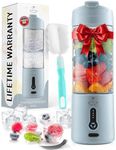Buying Guide for the Best Blender For Smoothies
Choosing the right blender for making smoothies can make a big difference in your daily routine. A good blender can help you create delicious, nutritious smoothies quickly and easily. When selecting a blender, it's important to consider several key specifications to ensure you get the best fit for your needs. Here are the main specs to look at and how to navigate them.Power (Wattage)Power, measured in watts, determines how effectively a blender can crush and blend ingredients. Higher wattage means more power, which is especially important for blending tough ingredients like ice, frozen fruits, and fibrous vegetables. Blenders typically range from 300 to 1500 watts. For basic smoothies with soft fruits, a blender with 300-600 watts may suffice. For more versatility and the ability to handle tougher ingredients, look for a blender with 700-1000 watts. If you plan to use your blender frequently and for a variety of tasks, consider models with 1000 watts or more.
Blade Quality and DesignThe quality and design of the blades are crucial for efficient blending. Blades should be made of durable, rust-resistant stainless steel. The design can vary, with some blenders featuring multi-tiered blades for better blending. High-quality blades ensure smooth and consistent results, reducing the need for stirring or re-blending. If you plan to blend a variety of ingredients, including tough ones, look for blenders with strong, well-designed blades.
Jar Material and CapacityBlender jars come in different materials, such as plastic, glass, and stainless steel. Plastic jars are lightweight and less prone to breaking, but they can absorb odors and stains. Glass jars are heavier and more durable, but they can break if dropped. Stainless steel jars are very durable and do not retain odors, but you can't see the contents while blending. Capacity is also important; jars typically range from 32 ounces to 64 ounces or more. Choose a jar size based on how many servings you usually make. For single servings, a smaller jar is sufficient, while larger jars are better for family-sized portions.
Speed Settings and ControlsBlenders come with various speed settings and controls, from simple on/off switches to multiple speed options and pre-programmed settings. More speed settings allow for greater control over the texture of your smoothies. Basic blenders may have 2-3 speeds, while more advanced models can have 10 or more. Pre-programmed settings can be convenient for specific tasks like making smoothies, crushing ice, or blending soups. Consider your blending needs and how much control you want over the process when choosing the right speed settings.
Ease of CleaningCleaning your blender should be quick and easy, especially if you use it frequently. Some blenders have dishwasher-safe parts, which can save time. Look for blenders with removable blades and jars that are easy to clean. Blenders with a self-cleaning function can be particularly convenient; you simply add water and a drop of dish soap, then run the blender to clean it. If you value convenience, prioritize blenders that are easy to disassemble and clean.
Noise LevelBlenders can be quite noisy, which might be a concern if you live in a small space or have noise-sensitive household members. Noise levels can vary significantly between models. Some blenders are designed with noise-reduction features to minimize disruption. If noise is a concern for you, look for blenders that are specifically marketed as quiet or have noise-dampening technology.
Durability and WarrantyA durable blender will last longer and provide better value over time. Look for blenders made with high-quality materials and solid construction. A good warranty can also provide peace of mind, covering repairs or replacements if something goes wrong. Warranties can range from one year to several years. Consider how often you plan to use the blender and choose a model with a warranty that reflects your usage expectations.


